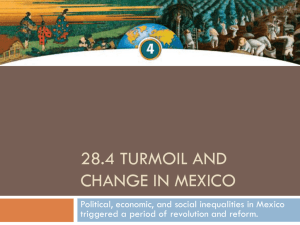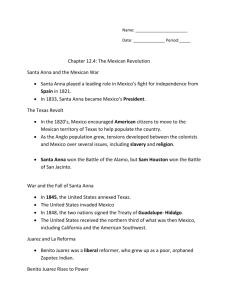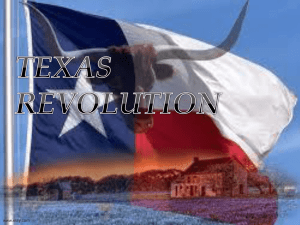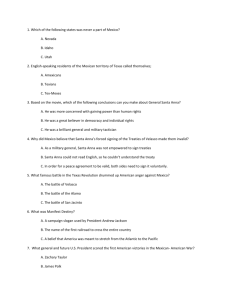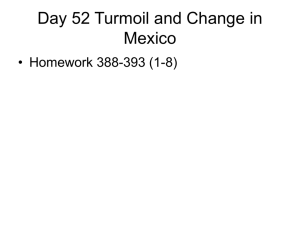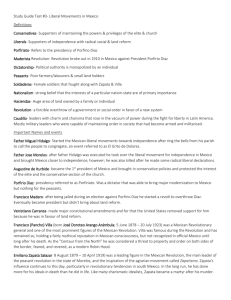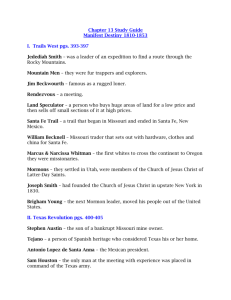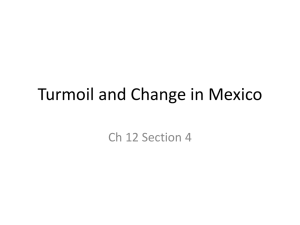Latin America
advertisement
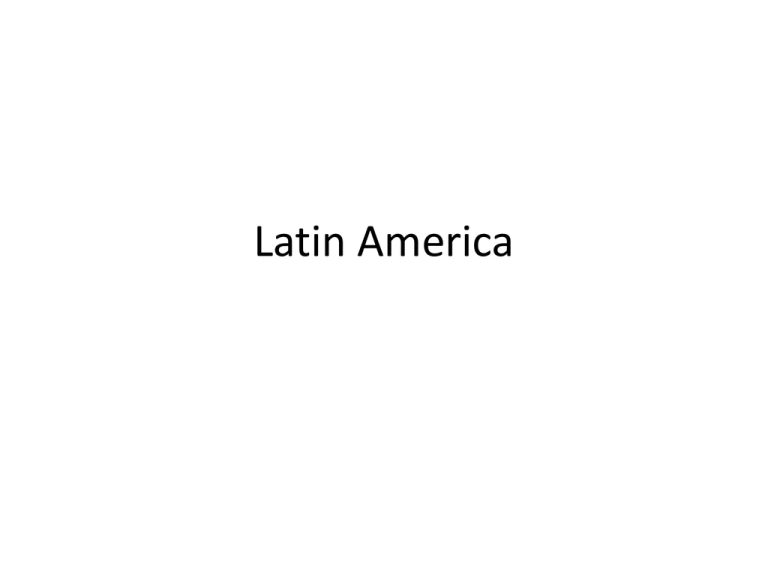
Latin America Latin America After Independence: Colonial Legacy • Colonial times, most Latin Americans worked for large landowners (called peons). • Peons were similar to slaves because they went into debt and their debt was passed from generation to generation. • After independence, the rich got richer, with unequal distribution of land and wealth Political Instability • Caudillos: dictators that tended to be charismatic military leaders in Latin America. • By 1830, nearly all the countries of Latin America were ruled by caudillos. • Ex: Juan Vicente Gomez (caudillo in Venezuela for 30 years) “All Venezuela is my cattle ranch.” Economies Grow Under Foreign Influence • Great Britain and the United States became Latin America’s main trading partners. • Economies depended on Exports • With refrigeration: exports of beef, fruits, vegetables and other perishable goods soared • Imported European and North American manufactured goods, so did not develop their own manufacturing industries Outside Investment and Interference • Latin America also borrowed money- at high interest rates- to develop facilities for their export industries. • Britain, France, US and Germany made many loans • If Latin American countries couldn’t pay back loans, foreign leaders threatened to collect debt by force or take over the facilities • Age of Economic Colonialism The Monroe Doctrine • 1823: issued by US President James Monroe • “the American continents…are henceforth not to be considered as subjects for future colonization by any European powers.” • Wasn’t really enforced until 1898 Cuba Declares Independence • Cuba was one of Spain’s last colonies in the Americas • 1868 Cuba declared independence and fought a decade long war • 1895 Jose Marti, was a famous Cuban writer who lived much of his life in exile in NYC- returned and led fight for Cuban independence, died in battle • Spanish had forced many Cubans into Concentration Camps Spanish-American War • 1898: US joins the Cuban war for independence • Lasted about 4 months • 1901: Cuba became independent nation, but US installed a military govt., causing resentment • US also gained Spanish colonies of Puerto Rico, Guam, and the Philippines: becoming US territories. Panama Canal • US nicknamed “Colossus of the North” • President Teddy Roosevelt (1901-1909) really wanted to build a Canal. • 1903 Panama was a province of Colombia: US offered $ to Colombia to build a canal, Colombia asked for more $, US then encouraged a revolution in Panama. • 1903 Panama (with help of US Navy) won independence from Colombia, then gave US a 10 mile wide zone to build the Panama Canal (opened 1914) Panama Canal Teddy Roosevelt and Panama Canal Roosevelt Corollary • US continued to have large investments in many Central and South American countries. • 1904: Teddy Roosevelt issued the corollary, saying the United States had a right to be “an international police power” in the Western Hemisphere. • US intervened in many Latin American countries over the next decades. The Mexican Revolution • Antonio Lopez de Santa Anna: played leading role in Mexico’s fight for independence from Spain in 1821, fought again in 1829 against Spain, and then became Mexico’s president in 1830. • Santa Anna was a powerful caudillo who ruled Mexico from 1833 to 1855 (taking brief hiatus to fight for Texas) Santa Anna Santa Anna’s Leg The Texas Revolt • 1820’s Mexico encouraged American citizens to move to Texas to help populate the country. • “Anglos” moved there and promised to follow the laws of Mexico in exchange for inexpensive land • Many Anglos wanted to continue to practice slavery, but Mexican govt. had abolished slavery • Also conflict over Roman Catholicism “Remember the Alamo!” Leadership of Texas Revolt • Stephen Austin encouraged a revolt against Mexico in 1835 • Santa Anna led Mexican forces • Santa Anna won the Battle of the Alamo, but lost at the Battle of San Jacinto • Sam Houston captured and released Santa Anna when he promised to recognize Texas independence War and Fall of Santa Anna • • • • 1845 US annexed Texas US invaded Mexico Fought for two years 1848: Treaty of Guadalupe Hidalgo: US received the northern 1/3 of Mexico including CA and the American Southwest • Santa Anna eventually went into exile Map: Mexican- American War Benito Juarez • Zapotec Indian: rose from humble background to being educated as a lawyer, and eventually governor of Oaxaca • Led a liberal reform movement. La Reforma: redistribution of land, separation of church and state, increased educational opportunities. • 1853 Santa Anna returned and exiled Juarez, two years later, SA ousted and Juarez returned Benito Juarez French Invade Mexico • Conservative upper-class Mexicans were threatened by liberal ideas: conservative rebels fought against the liberal govt. • Civil War: liberal govt. won and Juarez took over as President in 1858 • Mexico was in debt, some conservatives plotted with some Europeans to reconquer Mexico. Maximilian I • 1862, France under rule of Napoleon III, sent a large army to Mexico and took over the country • Napoleon III appointed Austrian archduke Maximilian to rule Mexico as an emperor • Civil War continued: 5th de Mayo • 1867: France withdrew, Maximilian was captured and executed • 1867: Juarez re-elected Mexico’s President Execution of Maximilian I Porfirio Diaz and “Order and Progress” • Mid- 1870’s New Caudillo, Porfirio Diaz • Diaz was also an Indian from Oaxaca • 1876: Diaz ousted the President and took control with the support of the military. • Elections became meaningless • Diaz offered land, power, or political favors to his supporters, terrorized those that did not support him. • Remained in power until 1911 Painting Porfirio Diaz Madero Begins the Revolution • Francisco Madero: wealthy background, educated in US and France • Announced he was running for President in 1911, was arrested and then exiled to US, where he called for a revolution against Diaz Francisco “Pancho” Villa • A popular revolutionary leader in Northern Mexico • Took money from rich and gave to the poor Pancho Villa Emiliano Zapata • Leader of a revolutionary army south of Mexico City. • Wanted to redistribute land to the poor. • “Land and Liberty!” Emiliano Zapata Mexican Leaders Struggle for Power • Spring of 1911: Diaz agreed to step down. • New election: Madero was elected President in Nov. 1911 • He had a hard time maintaining his power, resigned and was murdered. • Military leader, Huerta took over presidency, but his was unpopular and overthrown by Villa, Zapata, and Carranza Mexican Leaders Struggle for Power • Carranza took power • He then turned his army against Villa and Zapata. • 1919: Carranza lured Zapata into a trap and murdered him. • Zapata’s death marked the end of the Mexican Revolution: More than 1 million Mexicans had died New Mexican Constitution • Carranza’s revised Mexican Constitution • Promoted education, land reforms, and worker’s rights. • 1920: Carranza was overthrown by his former general Alvaro Obregon • Obregon: seized power, but didn’t remain a dictator. Supported constitutional reforms. • Obregon was assassinated in 1928 • Institutional Revolutionary Party (PRI) emerged.
